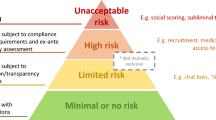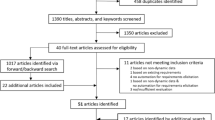Abstract
A method for scenario-based requirements engineering is described. The method uses two types of scenario: structure models of the system context and scripts of system usage. A modelling language is reported for describing scenarios, and heuristics are given to cross-check dependencies between scenario models and the requirements specification. Heuristics are grouped into several analytic treatments that investigate correspondences between users’ goals and system functions; input events and system processes to deal with them; system output and its destination in the scenario model, and acceptability analysis of system output for different stakeholders. The method is illustrated with a case study taken from the London Ambulance Service report. The prospects for scenario-based requirements engineering and related work are discussed.
Similar content being viewed by others
References
Carroll JM. The scenario perspective on system development. In: Carroll JM (ed.) Scenario-based design: envisioning work and technology in system development. Wiley, New York, 1995
Jacobson I, Christerson M, Jonsson P, Overgaard G. Object oriented software engineering: a use case driven approach. Addison-Wesley, Reading, MA, 1992
Kyng M. Creating contexts for design. In: Carroll JM (ed). Scenario-based design: envisioning work and technology in system development. Wiley, New York, 1995, pp 85–108
Potts C, Takahashi K, Anton A. Inquiry based requirements analysis. IEEE Software 1994; March: 21–32
Sutcliffe AG. A technique combination approach to requirements engineering. In: Proceedings of the 3rd international symposium on requirements engineering, Anapolis, January 1997. IEEE Computer Society Press, Los Alamitos, CA, 1997
Potts C, Takahashi K, Smith J, Ora K. An evaluation of inquiry based requirements analysis for an Internet service. In: Zave P, Harrison MD (eds.) Proceedings of RE ’95: Second international symposium on requirements engineering. IEEE Computer Society Press, Washington, DC, 1995, pp 27–34
Sutcliffe AG. Requirements rationales: integrating approaches to requirements analysis. In: Olson GM, Schuon S (eds.) Proceedings of designing interactive systems, DIS ’95. ACM Press, New York, 1995, pp 33–42
Graham I. Task scripts, use cases and scenarios in object-oriented analysis. Object-Oriented Systems 1996; 3: 123–142
Cockburn A. Structuring use cases with goals. http://members.aol.com/acockburn/papers/usecase.htm
Mullery GP. CORE: a method for controlled requirements expression. In: Thayer RH, Dorfman M (eds). Systems and software requirements engineering. IEEE Computer Society Press. Los Alamitos, 1987, pp 304–131
EE Yourdon. Modern structured analysis. Prentice-Hall, Englewood Cliffs, NJ, 1989
Jackson M. Software requirements and specifications. Addison-Wesley. Reading, MA. 1995
Mylopoulos J., Chung L., Nixon B. Representing and using non-functional requirements: a process-oriented approach. IEEE Trans Software Eng 1992; 18(6): 483–497
Chung L. Representing and using non-functional requirements: a process-oriented approach. Department of Computer Science, University of Toronto, 1993
Eason, KD, Harker SD, Olphert CW. Representing socio-technical system options in the development of new forms of work organization. Eur J Work Organ Psychol 1996;5(3):399–420
Harker SDP, Eason KD, Dobson JE. The change and evolution of requirements as a challenge to the practice of software engineering. In: IEEE symposium on requirements engineering, RE ’93, San Diego, CA. IEEE Computer Society Press, Los Alamitos, CA 1993, pp 266–272
Rational Corporation. UML: unified modelling language. Rational Corp., Boulder, CO, 1997
Maiden NAM, Sutcliffe AG. Requirements critiquing using domain abstractions. In:Siddiqi J (ed). Proceedings of the first international conference on reruirements engineering. IEEE Computer Society Press, Los Alamitos, CA, 1994, pp. 184–193
Allen J. A common sense theory of time. In: Proceedings of the international joint conference on artificial intelligence, 1985.
HMSO. Report of the Inquiry into the London Ambulance Service. HMSO, London, 1993
Jackson MA. System development. Prentice-Hall, Englewood Cliffs, NJ, 1983
Sutcliffe AG. Jackson system development. Prentice-Hall, 1988
Sutcliffe AG. Task related information analysis, Int Hum Comput Studies 1997;47:pp 223–257
Bailey RW. Human performance engineering, Prentice-Hall, Englewood Cliffs, NJ, 1982
Shneiderman B. Designing the user system interface, 3rd edn, Morgan Kaufmann, San Francisco, 1997
Sutcliffe AG. Human computer interface design, 2nd edn. Macmillan, London, 1994
Leveson N. Safeware: system safety and computers. Addison-Wesley, Reading, MA, 1995
Jackson M, Zave P. Domain descriptions, In: IEEE symposium on requirements engineering. IEEE Computer Society Press, Los Alamitos, CA, 1993, pp 56–64
van Lamsweerde A, Darimont R, Massonet Ph. Goal directed elaboration of requirements for a meeting scheduler: problems and lessons learnt. In: Harrison MD, Zave P (eds). Proceedings of RE-95, IEEE international symposium on requirements engineering, York, UK. IEEE Computer Society Press, Los Alamitos, CA, 1995
Basili VR, Rombach HD. The TAME project: towards improvement-oriented software environments. IEEE Trans Software Eng 1988; 14(6): 758–773
Boehm B, In H. Identifying quality-requirement conflicts. IEEE Software 1996;March:25–35
ISO 9241. Ergonomic requirements for office systems: visual display terminals. Parts 10, 11, 16. International standards, parts 1–9, 12–15, 17, draft standards. International Standards Organization, Switzerland, available from national standards organisations.
Rummler GA, Brache AP. Improving performance: how to manage the white space on the organization chart. Jossey-Bass, San Francisco, 1995
Hollnagel E. Human reliability analysis: context and control. Academic Press, London, 1993
Reason JT. Human error. Cambridge University Press, Cambridge, UK, 1990
Macaulay L. Requirements engineering. Springer-Verlag. Berlin, 1996
Sommerville I, Sawyer P. Requirements engineering: a good practice guide. Wiley, New York, 1997
Minocha S, Maiden N, Ryan M, Manning K. A cooperative scenario-based approach to acquisition and validation of system requirements: how exceptions can help. In: Proceedings of the Glasgow safety critical system engineering workshop, University of Glagow, 1997
Author information
Authors and Affiliations
Corresponding author
Rights and permissions
About this article
Cite this article
Sutcliffe, A. Scenario-based requirements analysis. Requirements Eng 3, 48–65 (1998). https://doi.org/10.1007/BF02802920
Issue Date:
DOI: https://doi.org/10.1007/BF02802920




